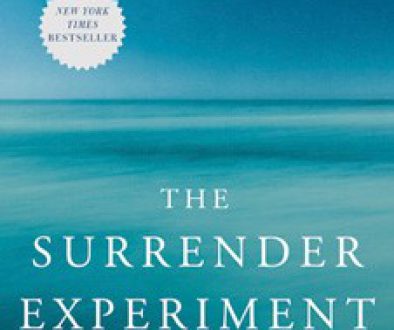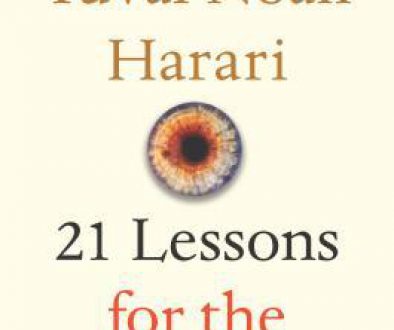Not having a Self 无我
Chap1 Not having a self
Harness it to become a happier person and even a better person: to feela new sense of connection with your fellow creatures and a new sense of generosity toward them.
Walpola Rahula 1959
According to the teaching of the Buddha, the idea of self is an imaginary, false belief which has no corresponding reality, and it produces harmful thoughts of ‘me’ and ‘mine,’ selfish desire, craving, attachment, hatred, ill-will, conceit, pride, egoism, and other defilements, impurities, and problems. It is the source of all the troubles in the world from personal conflicts to wars between nations. In short, to this false view can the tranced all the evil in the world.”
The Buddha’s strategy in this discourse is to shake the monks’ confidence in their traditional ideas about the self by asking them where exactly, in a human being, we would find anything that warrants the label self. He conducts this research systematically; he goes through what is known as the five “aggregates” that, according to Buddhist philosophy, constitute a human being and that human’s experience:
(1) the physical body (called “form” in this discourse), including such sense organs as eyes and ears; (2) basic feelings; (3) perceptions (of, say, identifiable sights or sounds); (4) “mental formations” (a big category that includes complex emotions, thoughts, inclinations, habits, decisions); and (5) “consciousness,” or awareness—notably, awareness of the contents of the other four aggregates. The Buddha runs down this list and asks which, if any, of these five aggregates, seem to qualify as self. In other words, which of the aggregates evince the qualities you’d expect self to possess?
For starters, the Buddha links the idea of self to the idea of control. For example, if feeling were self, then the feeling would not lead to affliction. And you’d be able to change your feelings by saying “May my feelings be thus, may my feeling not be thus.” But, of course, we don’t ordinarily have this kind of control over our feelings. So the feeling is not self. So too with other aggregates.
Of course, self may be associated with other properties like persistence. However, we can also argue that all five aggregates are impermanent. And above is the core of the argument the Buddha makes in this first and most famous discourse on not-self.
第一小节 无我
2017年相当盛行的一本《为什么佛学是真实的》,作者罗伯特莱特,美国新闻人,尤其擅宗教题材的写作。本书是作者亲身参与有关佛教的retreat,冥想训练,在与日常与老师对话结合自己的体验悟道而作。以上关于“无我”的讨论是令我印象非常深刻的一节,以至于当我准备对这样一本书写review时第一小节选择了这个话题。
书中论述“无我”的观念是从佛陀与五位僧人的对话开始。首先,佛陀列举了佛教中关于人的五大组成要素(有《五蕴皆空经》一作,因而有人也把这五种要素称之为“五蕴”,我本人并不知道这种翻译,出于形式文雅性,我们不妨也来看一下对应翻译),那么是哪五蕴呢?
- 色蕴- form:人的身体、形态
- 受蕴-basic feelings:人的基本情感,喜怒哀乐
- 想蕴-perceptions:基本感知,视觉嗅觉听觉味觉
- 行蕴-mental formations:精神形态,喜好
- 识蕴-consciousness:认知
佛陀依次检视五蕴,并提问:“请告诉我这五蕴中,谁被“自我”所拥有?”。 对于初步理解这个问题的朋友,书中给了一个简单的思考方法:
自我具有两大基本属性:控制(control)+ 持续存在(persistence)
如果说我们认为我们的“感觉” 是 “自我” 所拥有的话,那么感觉应该是可以被“我们”掌控的,然而我们都知道我们是无法掌控我们的“感觉”的,并且它也并不会是“持续存在”的,因此我们得出“感觉”不是自我,也不被“自我”所拥有。佛陀接着论证,所有的五种组成人的要素都不能具备这两种属性,因而没有自我这个概念。
读到这里,希望你已经一头雾水。不用我细细分析,你也能看出以上的论据有太多太多的逻辑漏洞。但我希望你看到的不仅仅是漏洞,而能品味到哪怕一点点的“无我”的思想。我们回到问题的本质:
为什么佛家要论证无我,为什么佛学要摒弃“自我”这个概念?
Chapter 1.1 自我为中心,即是痛苦源头
谈到这个话题,脑子里蹦出太多的概念和论据,听我讲话可能没啥逻辑,看我写字可能更没逻辑。但我还是要尝试着整理出来,希望还能有一些层次。
- 首先,佛学认为人类一切的痛苦来源于“三毒”:“贪、嗔、痴”。 贪是无限的欲求,嗔是愤怒是排斥,贪和嗔都是痴(愚昧)的表现。所谓涅槃即是能够摈弃,远离贪嗔痴。那么如何远离呢?
- 远离的方法最直接的即是理解我们上述的论证,即“五蕴”无我的论证。一切痛苦来源于贪嗔痴(人的本性啦),而贪嗔痴又是根植于“我”这个概念。无我即是“我并不比谁更特殊”。
- 在斯多葛学派中一个很重要的有关痛苦来源的论证在于(我自己的理解):“痛苦多是来自于以自我中心的,不切实际的,过高的期望”。所谓期望越大失望越大,幸福感某种程度上来来自“超期望的事实”。
- 小乘佛教强调个人的开化,涅槃。我想即是达到个人的“无我”境界。大乘佛教强调通达之后还要帮助更多人开化,获得智慧。
- 以上仅仅是一些碎片化的观点,那么什么是我认为的实线无我的方法呢?实际一点:
- 分辨并有选择地克制自己的欲望。(自控力,延迟享受的能力,自我认知的程度,对世界的认知程度,回归本心)即远离贪。
- 降低期望,培养同理心,推己及人,感化他人 即远离嗔。
- 不断学习吸收负熵,一步步建立人生观 世界观 价值观 远离痴。不断体验,感受世界,观察人,理解人,了解自我,理解社会。
有一句话叫:“听了那么多道理,仍然过不好这一生”。为啥,因为我们太多人根本不理解“听”到底是啥。知行合一,看再多也需要自己去体验。
Chapter 1.2 痛苦来源,什么决定了我们的意识?





